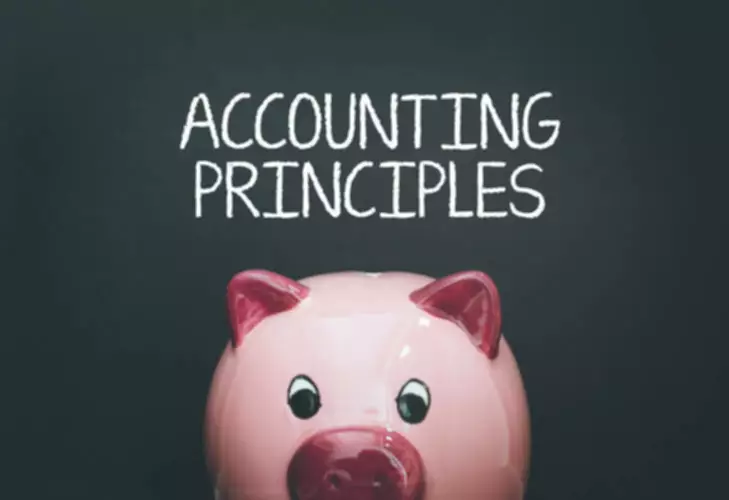Content
- Incremental Purchase Cost Methodology and Results for Clean Vehicles
- Devices for direct production of mechanical energy
- Benefits to Incremental Cost Analysis
- More Definitions of Incremental cost
- Incremental Cost – Explained
- What is the Incremental Cost of Capital?
- Incremental Cost Decisions
- Incremental Cost Formula

In the pelletized biomass cofiring scenario, pellet costs and maintenance costs are the major cost components of the LCOE. Coal cost and ash disposal are also significant cost components, but capital recovery cost is insignificant, given the low modification cost for the pelletized biomass scenario. The cost breakdown for the LCOE at other cofiring levels follows the same trend. If the incremental cost of reaching an additional customer exceeds the expected revenue generated by that customer, then you may need to lower your cost per acquisition (CPA) and rework the strategy.
- You can use this as a tool to manage cash flow while ensuring you are prepared for cost increases.
- Incremental costs are relevant in making short-term decisions or choosing between two alternatives, such as whether to accept a special order.
- In the pelletized biomass cofiring scenario, pellet costs and maintenance costs are the major cost components of the LCOE.
- Before calculating ICC, you need to determine the fixed costs and the variable costs.
- It is usually made up of variable costs, which change in line with the volume of production.
- There is a need to prepare a spreadsheet that tracks costs and production output.
This is largely due to the feedstock costs, biomass requirement, and the transportation distance. For example, while the feedstock cost at 5% cofiring level for forest residue pellet is 6.18$ GJ− 1, the feedstock cost for raw forest residue is 6.03$ GJ− 1. The biomass requirement for raw biomass is higher than that of pellet and therefore results in higher costs for raw biomass than pellet at this cofiring level. The calculation of incremental cost shows a change in costs as production expands. Certain costs will be incurred whether there is an increase in production or not, which are not computed when determining incremental cost, and they include fixed costs.
Incremental Purchase Cost Methodology and Results for Clean Vehicles
The management must look at the additional cost of producing the products under one roof. This could mean more deliveries from vendors or even more training costs for employees. Incremental cost refers to the cost of producing an additional unit of output, taking into account all costs that vary with the level of production, including fixed costs. Statista forecasts that e-commerce sales are expected to reach around $8.1 trillion by 2026. To gain efficient revenue and make informed decisions, you need to understand the cost of producing goods and services. Two related concepts that are used in this context are incremental and marginal costs.

Marginal cost is the additional cost a company incurs when it produces one additional unit of output. In the sections below, you’ll find out what you need for proper ICC calculation. Be sure to read until the end for answers to frequently asked questions. A company raises additional increments according to its needs.
Devices for direct production of mechanical energy
Depending on the type of business, you could purchase more inventory or fund a new expansion. But sometimes the business needs to raise new financing options. Therefore, businesses need to carefully consider both costs when deciding on the volume of production. Accordingly, the incremental cost will not limit the available credit amount for street vehicles that have a gross vehicle weight rating of less than 14,000 pounds and are placed in service in calendar year 2023. The guidance informs taxpayers that the Department of the Treasury and the Internal Revenue Service have reviewed the incremental cost for all street vehicles in calendar year 2023.
However, in practice, such a graph is unlikely to exhibit a curve (unless forced smoothing of the plotted points is carried out) and the alternative approach is commonly adopted in these circumstances. When you increase to two widgets, the employee works more efficiently due to repetition. So instead of taking one hour to make two products, your employee can do it in 45 minutes. These materials were downloaded from PwC’s Viewpoint (viewpoint.pwc.com) under license. Add incremental cost to one of your lists below, or create a new one.
Benefits to Incremental Cost Analysis
These https://www.bookstime.com/articles/incremental-costs should be evaluated for each activity of the project and even for each customer segment. The tool often used to analyze and possibly reduce the costs of a project is a graph in which each of the activities is represented with its cost, evaluated as explained previously. Figure 4.5 represents such a graph in which the project consists of manufacturing a type of product. To reduce the size of the graph, we represent five activity centers instead of the detailed activities. Buy, make, move, store, and sell denote these activity centers.
- Now you’re ready to put your variable cost differences to work to get the incremental cost.
- Evaluating the incremental cost-effectiveness of a technology is critical to understanding the impact of its adoption.
- The cost of each additional unit will be different, and the company must weigh the pros and cons of each option to decide which is best.
- It should be noted that the additional cost of the finish and accessories resulting from the increasing thickness of insulation is included.
- So, the proper allocation of the incremental costs helps the company in various decision making processes as well as for the proper presentation of its accounts.
An incremental cost is the difference in total costs as the result of a change in some activity. Incremental costs are also referred to as the differential costs and they may be the relevant costs for certain short run decisions involving two alternatives. Incremental revenue is compared to baseline revenue to determine a company’s return on investment.
More Definitions of Incremental cost
Incremental cost analysis is used when making investment decisions. It takes into account all relevant costs and benefits when making investment decisions. From the above example, it can be seen that total incremental cost is $2,500, but when we calculate per unit cost of production, it get reduced from $5 to $3.75. Incremental cost is choice-based; hence, it only includes forward-looking costs. The cost of building a factory and set-up costs for the plant are regarded as sunk costs and are not included in the incremental cost calculation.
- Variable cost of production changes with the volume of the production units.
- With the number of cost-effectiveness studies rising, it is possible for a cost-effectiveness ratio threshold to be established in other countries for the acceptance of reimbursement or formulary listing at a given price.
- Technology pathway resulting from investments in efficiency and onsite renewable energy generation using a residential PV system.
- With BeProfit’s platform, you can monitor expense metrics in real time all from one dashboard, making it easier to implement changes that can maximize your bottom line.
- Incremental cost analysis is used when making investment decisions.
Note that these costs should be recorded when the corresponding activities are performed. In looking at the chart, the most affordable work activity to accelerate along the critical path would be Activity G. We can accelerate this by 2 days, before the critical path shifts to include another path of activities. After accelerating Activity G by 2 days, our schedule would look like Fig. The critical path is highlighted in red (dark gray in print versions). The owner has directed the contractor to accelerate the work so that the project finishes in 25 days. Therefore, the contractor must shorten the overall duration by 7 days.
Incremental Cost – Explained
It is usually made up of variable costs, which change in line with the volume of production. https://www.bookstime.com/ includes raw material inputs, direct labor cost for factory workers, and other variable overheads, such as power/energy and water usage cost. The maximum energy savings are achieved by adding the system integration advantages of multiple efficiency measures shown in Figure 19.3 with the onsite power generated by the residential PV system shown in Figure 19.5. The fully developed least cost curve that develops from this combination is shown in Figure 19.6. For pelletized biomass, two scenarios were considered, one with pellet transportation costs and the other without.
What is the incremental cost analysis?
Incremental analysis (also referred to as the relevant cost approach, marginal analysis, or differential analysis) is a decision-making tool used to assess financial information. The three main concepts relevant to incremental analysis are relevant cost, sunk cost, and opportunity cost.
Let’s say, as an example, a company is considering increasing their production of goods but needs to understand the incremental costs involved. Below are the current production levels as well as the added costs of the additional units. Understanding incremental costs can help a company improve its efficiency and save money. Incremental costs are also useful for deciding whether to manufacture a good or purchase it elsewhere. Understanding the additional costs of increasing production of a good is helpful when determining the retail price of the product. Companies look to analyze the incremental costs of production to maximize production levels and profitability.
What is the Incremental Cost of Capital?
Fixed costs are often not included in calculating incremental costs. Evaluating the incremental cost-effectiveness of a technology is critical to understanding the impact of its adoption. The purpose of this study was to evaluate, using a particular example, how the specific alternatives selected for a cost-effectiveness analysis may influence the results of the analysis. In this example, we analyzed the incremental cost-effectiveness of estriol screening for Down syndrome. Model assumptions of expected costs and effectiveness were based on previously published work involving four clinical strategies, including a “do nothing” (no screening) strategy. When the analysis started with all four strategies, two of the strategies could not be considered cost-effective because of extended dominance.
Incremental cost is calculated by analyzing the additional expenses involved in the production process, such as raw materials, for one additional unit of production. Understanding incremental costs can help companies boost production efficiency and profitability. You simply divide the change in cost by the change in quantity. Determining these costs is done according to your own overhead structure and price for raw materials and labor. Figure out fixed costs then set variables costs according to different levels of production. Divide the cost by the units manufactured and the result is your incremental or marginal cost.


Deixe uma resposta
Quer juntar-se a discussão?Sinta-se à vontade para contribuir!